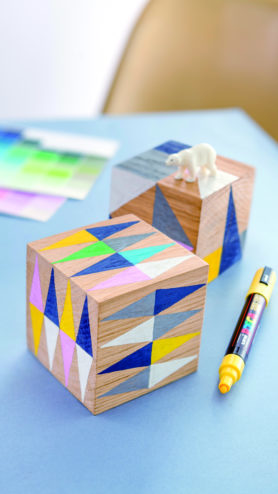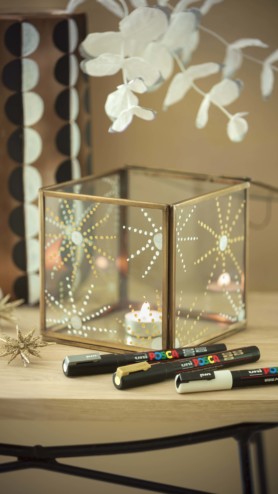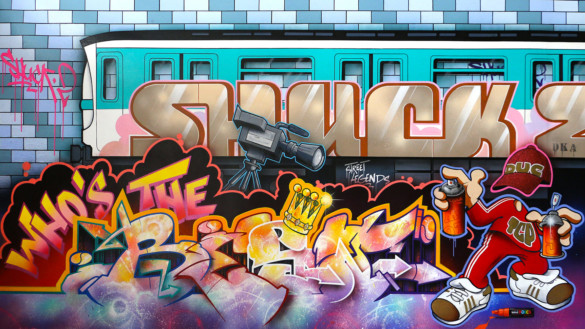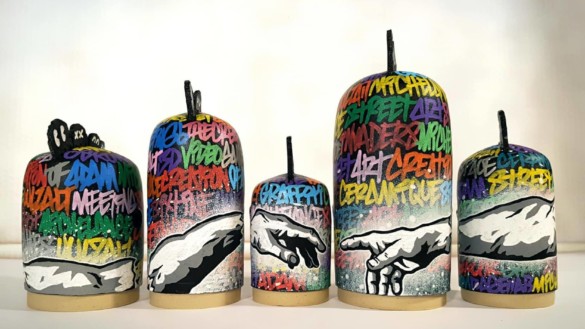
Little Madi, little not so little

“Little Madi isn’t just anybody. Illustrator within the sphere of the couple Koralie and Supakitch, she observes and learns fast. Black and white dominate, porcelain is her favourite material and animals play a large part in her work.
She currently has an exhibit in Paris, in the Element store, someone confided. A few facets of her creative life and she’ll take advantage of the capital in winter.
You’ve travelled to so many different places, what do you think you gained from it?A certain amount of freedom, it allows you to take a step back and gain perspective on your work and the artist status. It’s a way to set the record straight, take stock of what I love, what I enjoy. Rethink my approach, it’s a time when you look within yourself, you discover other techniques, other ways of doing things. In New York, it was mostly the speed of the city, the life, the rhythm, the possibilities, the freedom, and this feeling that you can conquer anything. That’s what’s really pleasant.
In Brussels, there’s a wacky side, freedom, and if you have an empty page, you can create anything. In France, I felt a little compartmentalised. I didn’t find my niche. At the La Cambre open house, I felt good right away. They give everyone an opportunity and let you search, make mistakes, find your style, express yourself…
Can you tell us more about La Cambre?
It’s a school of visual arts. I painted, screen painted, and you can go back and forth between sections, typography, binding, etc. It’s artisanal, it’s learning the .basics
How do you live your artist statute?
I live very well with it (smile). It’s complicated but it’s my passion. Sometimes it’s exhausting, because it’s 24/7. When you’re an artist, you think all the time, you doubt everything… But it’s really exciting!
How do you manage your personal work and orders?
I worked for Volcom and Nikita, trustworthy brands. They come looking for your style and you don’t have a closed briefcase. I propose things and we find a happy medium, so I’m not frustrated. I’m lucky to be able to express myself and the result resembles me.
For my porcelain work, it’s another rhythm. The collections aren’t regular, I work differently. I have a client who’s waiting on me, to see what I’ll do. It’s not like drawing where you’re free.
How did you start drawing on porcelain?
I was at a workshop in Paris, in a graphic arts firm. I didn’t really enjoy it, even though I learned a lot. I realised that I didn’t want to do that anymore so I drew a lot when I got home. One night, I just started drawing on plates.
After that, I wanted to know how to make the ink stay, and I turned towards Limoges porcelain. I just felt immediately attracted to this material. Noble material, the gentle finesse, table art, it really spoke to me. I work at Rotring and with Chinese ink, and it took.
It’s French Identity in your work!
Yes, a little, a lot, and I try to keep it. I don’t want to lose control.
What does that mean, to lose control?
To go to China to do 500 cups for instance. It doesn’t interest me. I like the drawing on paper side of it, and reproducing it on porcelain. I bake, and that’s it. The creative process belongs to me, from start to finish.
For porcelain, I do specific drawings, collections. There’s a difference between an original drawing and a porcelain cup. I try to separate the practices, I have a bit of a different style depending on the material.
And you attended a workshop with Koralie & Supakitch…
It was a dream! I knew their work, especially Koralie’s, and the workshop was in New York. When I got there, we immediately agreed on the way to work. I lived at their rhythm, very stressful, very exciting. They always have loads of projects: frescoes, clothing…
It was really fulfilling, and something went off in my head. I told myself, I needed to just get out there. Ever since then, we’ve been together. They encourage me. It’s a source of inspiration. They have incredible energy and they’re passionate. They communicate it and they’re really happy doing what they do. And when Guillaume [Supakitch – editor’s note] starts tattooing, he’s getting good fast because he likes it, his lines are there and he’s ecstatic.
Do you do tattooing too?
I’m learning. It’s hard but I have guinea pigs, loyal friends, who lend me skin!
You worked with Fafi and Koralie, is there solidarity between women in illustration?
Surprisingly, yes. Feminine street art is developed in France and Koralie is like a big sister to me. I met Fafi in Amsterdam at a wall for Grolsch and, right away, she took me under her wing. There’s a passage of knowledge side to it and she immediately explained their way of working, how to work on a wall. Koralie was inducted by Fafi 15 years ago, they have painted together a lot.
Are you on social media? Is that inevitable for an artist?
It’s not my favourite activity but it speaks to me, especially Instagram, which is a good medium. You get feedback from people who follow your work and with whom you can exchange. I find it pleasant. And it’s important because people need to be able to find you quickly.
To conclude, do you have a special thing about animals…
It’s silly really. I like drawing textures like hair and feathers (smile), they’re drawing sensations and it’s with Rotring that I discovered that I really love drawing that sort of thing. It’s very fine and precise and I was able to concentrate on the frames and details. It comes back often… Right now, I’m drawing lions and tigers!”
https://www.instagram.com/little__madi/?hl=fr
VIMEO : https://vimeo.com/117510009
INSTAGRAM : https://www.instagram.com/little__madi/?hl=fr






















.png)





















.png)





![[Supports]-[Papier-carton]-[1]](https://www.posca.com/wp-content/uploads/2018/06/supports-papier-carton-1-278x494-c-default.jpg)

![[Supports]-[Céramique]-[1]](https://www.posca.com/wp-content/uploads/2018/08/supports-ceramique-1-278x494-c-default.jpg)
![[Supports]-[Tissu textiles et peaux]-[1]](https://www.posca.com/wp-content/uploads/2018/06/supports-tissu-textiles-et-peaux-1-278x494-c-default.jpg)
![[Supports]-[Toile]-[1]](https://www.posca.com/wp-content/uploads/2018/06/supports-toile-1-278x494-c-default.jpg)

